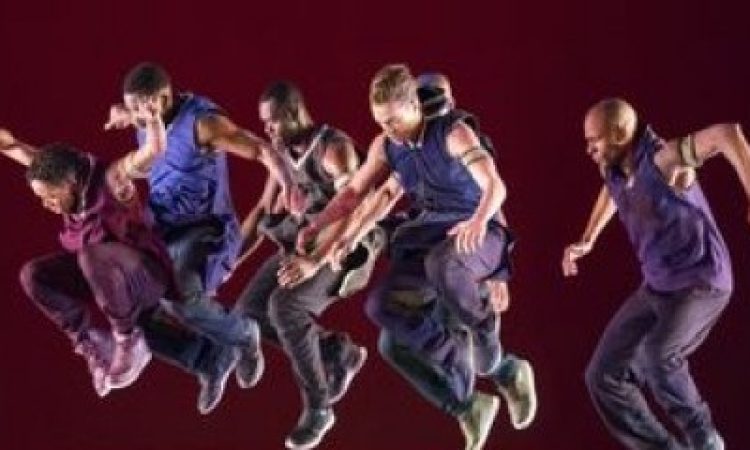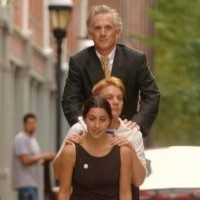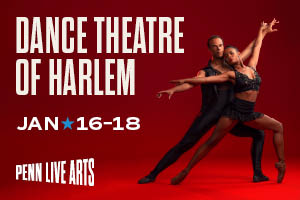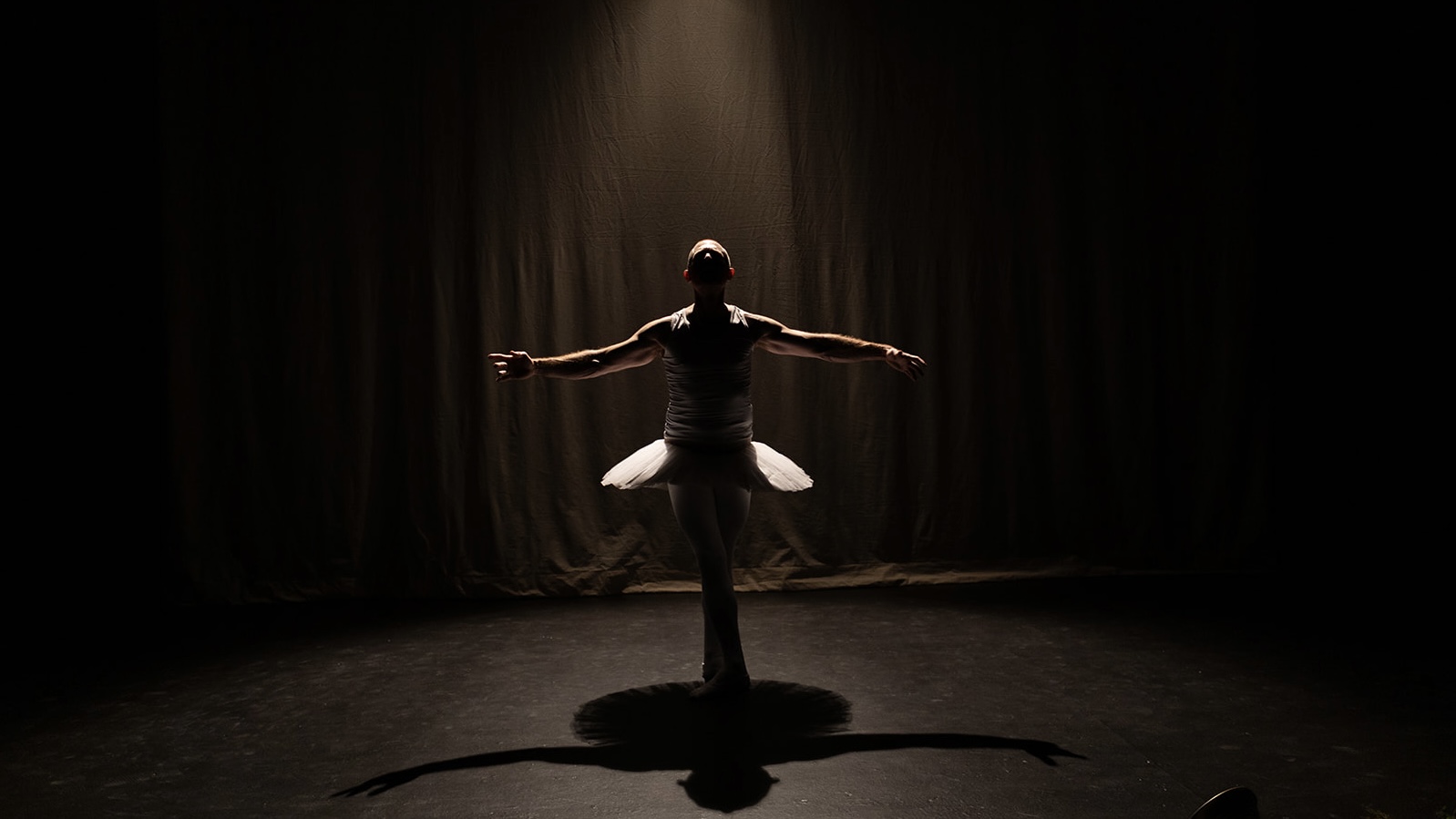The intriguing juxtaposition of Alvin Ailey’s signature Revelations (1960), and the Philadelphia premiere of Rennie Harris’s dark and penetrating Lazarus (2018), in the recent Ailey American Dance Theater 60th Anniversary program, creates a fascinating discourse between two master African-American choreographers of different generations for an audience riveted by both works.
It is not only the exchange of aesthetics of different eras, Ailey’s Horton and Graham-derived technique and Harris’ eclectic street and social club sources, or their respective uses of ecclesiastic metaphors of suffering and redemption. The program is rather a larger exchange of perspectives on black identity, history, and existential questions.
This was a challenging commission by the Ailey company for Harris—the third in a trilogy for the company after Home (2011) and Exodus (2015)—as it was to be a celebration of the 60th year of the company’s founding, and with Harris as Ailey’s first hip-hop artist-in-residence who has been the first street-dance choreographer setting work on the company. As he related in an interview, he could not do a “ding-dang, yah” happy evocation of Ailey, the man, and the legacy. “Ninety-five per cent of the work I do is dark.”
The Academy of Music program opens with Harris’s Lazarus and concludes with the company’s most popular and celebratory work, Revelations. This Ailey classic, said to be the most widely viewed modern dance work in the world, sets a suite of dances to gospel, spiritual, and sacred blues songs on a path from sorrow to joyful hope. Harris’s quest to mine the horrific images of black oppression of the centuries is clear from the onset of Lazarus. A male figure expires with a death rattling cough that courses from the sound tape. Might it be Lazarus, before his miraculous resurrection by Jesus, or Ailey (who died of AIDS in 1989)? He is dragged off stage and another male, coughing, also expires, and is dragged off. A woman expiring and removed from the stage is a third victim. A group of women, on all fours, then crawl onto and off stage. This is not going to be the story of one person, but as Lazarus will unfold, one of collective catastrophe and universal loss. All is met with silence from the Academy audience; in contrast, the analogue “Pilgrim of Sorrow” opening of Revelations, finds the audience applauding multiple times responding to Ailey’s familiar images and channeling of the spirituals Been ‘Buked, Didn’t My Lord Deliver Daniel, and Fix Me, Jesus.
Although the Ailey and Harris works structurally follow similar arcs from slavery to post-slavery to states of liberation and renewal, Harris insists on excavating the feel and look, and with the aid of Darrin Ross’s all-encompassing score, the sound of the brutality of oppression (the latter including barking police dogs and fire hose sprays, directed at civil rights protestors in the ’60s). In a darkened setting (lighting by James Clotfelter), that is either a nightmare of the mind or a bloodied ground of a graveyard, women are harvesting, but what is being gathered? Men, heads bowed to chest, stretch stiff arms diagonally downward in servitude to the earth. Dancers fall to their knees, prayerful hands trembling. And then the horrific image of a group of men with their necks angled onto one shoulder, bodies swaying, the “strange fruit” we can never forget.
Harris changes direction and pace and wows us with his exuberant offering of GQ ensemble dance, derived from Philly social dance clubs of the ’60s. Amidst the lightening-fast, intricate GQ stepping that would spark flames but for the rubber soles striking the floor, clapped rhythms and dancers racing across the stage, Harris weaves in the prior image of the men-as-ploughs shackled to the earth, and we hear the cries of Michael Kiwanuka’s Black Man in a White World (2016).The sonorous lament of the spiritual’s words, “long, long way from home,” which could have been plucked out of Revelations, suddenly deconstructs to the sound of gunshots.
If Ailey sourced Revelations in the cultures of his black family, and the music and church roots of rural Texas of the ’30s, from what he has called his “blood memories,” Harris has always been compelled since his earliest concert works in Philadelphia* to unlock the closets and reveal a society in crisis and the body in crisis, painful truths that will never draw spontaneous audience applause. His autobiographical Endangered Species (1992) addressed witnessing and being the victim of childhood molestation and physical violence, including a frantic slow-action running in place from rival thugs. Lorenzo’s Oil (1995), created after seeing the dead body of a friend floating in the Schuylkill River, freeze-framed states of terror, and captured a tormented asthmatic breathing echoed in the opening scene of Lazarus. Assuming Ailey experienced his own litany of personal torments and demons, and also as a “black man in a white world,” he appears to have made different artistic choices, finding his own truths.
Lazarus’s Act 1 concludes with the image of supine dancers whose arms undulate upwards like quivering sea grasses or limbs of bodies refusing to be fully swallowed by the earth, a “blood-stained, haunted soil,” in Terence Trent D’Arby’s accompanying song, As Yet Untitled (1986). We hear D’Arby’s “No grave shall hold my body down/ This land is still my home.”
Act 2 begins with this scene, but the former dancers who had been wearing country work clothes now don purple and burgundy tank tops and flowing garb (from Mark Eric Rodriquez), and with shouts of “Freedom’s come” and the sound of Lift Every Voice and Sing the scene shifts to a liberating, house dance party to complete Lazarus’ arc. Ailey’s parallel closing is the much-loved ensemble dance section, Rocka My Soul in the Bosom of Abraham (in this Luke parable the leprous but righteous Lazarus is carried by angels to Abraham’s refuge after death). Maybe it’s the familiarity or the datedness, but I find the Ailey closing and aspects of the entire work quite tame, almost tepid, in contrast to Harris’s engagement with our time. His rousing party begins with dancers reaching in prayer and for hope, and then heats up with samba-like beats and top-rocking shuffles. Harris covers his bets, from a raised-arm reference to church praise dancing to a hip-hop, one-armed grounded cartwheel; a secular nod to Nina Simone’s Feeling Good (1965) joined with hand-clapping shouts of “he has risen.” Harris fashions a cross-cultural religious and secular revival of boundless vitality and inspiration.
The party abruptly ends. In the darkness, one silhouetted man slowly departs. In a coda, Harris, using past audio of Ailey during his life, constructs a conversation with him asking him about his “blood memories” (a time-travel interview device borrowed from the dialogue with the deceased Tupac Shakur in Kendrick Lamar’s song Mortal Man). Beyond this audio, the conversation has been taking place all evening among the dancing spirits of the two works, questioning the past and the future, who we were and who we can be.
*Philadelphia readers should note that a number of smaller venue dance incubators and groups were critical to Harris’ development and transition to his current hip-hop concert dance. These included the Community Education Center (CEC) with Homer Jackson presenting; Michael Pedretti’s Movement Theater International; Myra Bazell’s Kumquat Dance Theater; the Susan Hess Dance Studio; and the Painted Bride Arts Center. Terry Fox’s Philadelphia Dance Projects commissioned Harris’ first full-length evening work in collaboration with Grisha Coleman at the Bride in 1997.
Alvin Ailey American Dance Theater, Celebrating 60 Years!, The Kimmel Center Academy of Music, March 1-2.






